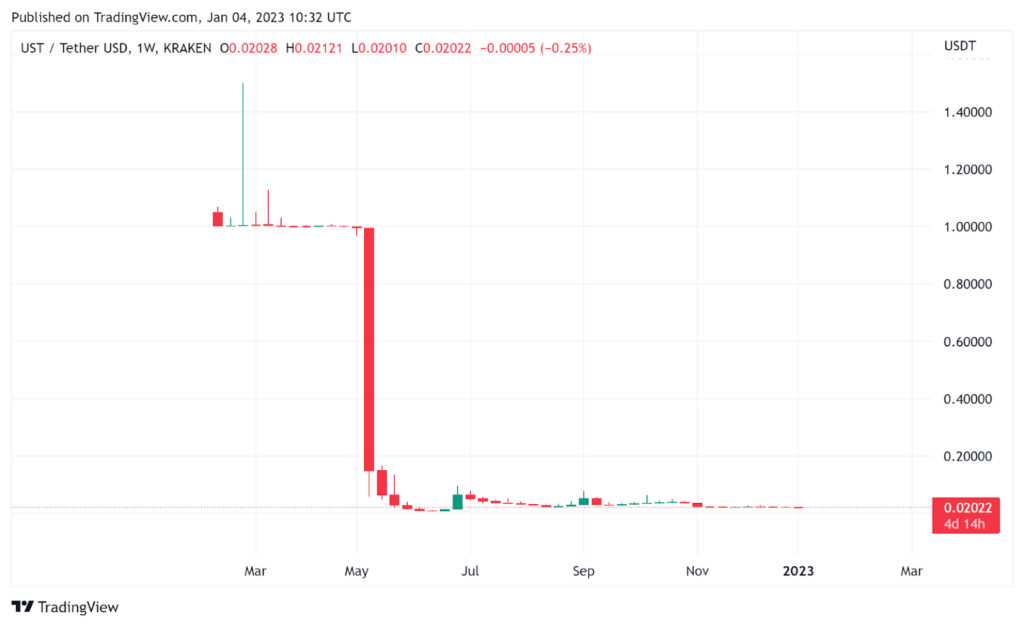Stablecoins are one of the wisest inventions in the cryptocurrency market. As the name speaks, the price of stablecoins stays the same as the asset it is pegged (linked) to. When bears take over the market, these stablecoins become very popular as they keep you from losses. In a downward market, people who hold stablecoins might need to invest them in yield farming protocols as liquidity providers (LPs). This article explains the underlying characteristics of stablecoin liquidity pools and their pros and cons.
What Is a Stablecoin?
There are various definitions of stablecoins, but for the sake of convenience, in this article, we will use the term defined as a digital asset used for payments and investments that maintain equivalence with a fiat currency (e.g., 1 unit of stablecoin = 1 dollar), such as having underlying assets.
When a user remits fiat currency to a stablecoin operator, the company will issue the same amount of stablecoin to the user on the public blockchain. This allows investors to convert their fiat currency into a form that can be circulated in the cryptocurrency market. USDT and USDC, which are representative examples, have increased their issuance amounts to approximately $67 billion and $44 billion, respectively (as of January 2023).
Stablecoins come in various variations, such as the type of issuer, distribution network, and price stability mechanism. In addition, the expected benefits and risks differ depending on the variation.
With such stablecoins, investors can close cryptocurrency positions with large price fluctuations and stabilize prices without exchanging them for fiat currency. This makes it possible to complete crypto asset management within the crypto asset market on the blockchain. In addition, Decentralized Finance (DeFi) has developed as the number of stablecoins circulating in the cryptocurrency market has increased.
Benefits of Stablecoin Yield Farming
Most of the benefits of yield farming with stablecoins come from the inherent feature of the stablecoins, which is the stability of their price. Out of these characteristics, having less fluctuation and a lower risk of impermanent loss can be enumerated. Let’s see how these risks are mitigated with stablecoin liquidity pools.
Less Fluctuation
The cryptocurrency market is highly volatile, and prices can fluctuate significantly in minutes, if not seconds. For this reason, some people may not want to engage in such high volatility, and still want to use the opportunities this market gives them. In this case, they can put their stablecoins in liquidity pools that allow them to do so.
This way, the investor can be very sure that their assets are not subject to these fluctuations and earn passive income with higher confidence. This is the very same reason stablecoins were created in the first place; to jump into a safehouse when you feel you’re going to suffer losses.
No Impermanent Loss
In addition to the benefits mentioned above, stablecoin liquidity pools also minimize the risk of impermanent loss to a great extent. Impermanent loss occurs when you provide liquidity to a liquidity pool, and the price of your deposited assets decreases compared to when you deposited them. As a result, although you have earned interest, you are in red. This can happen during times when the market is going through high volatility. The greater the change, the greater the exposure to impermanent loss.
Read more: What is Impermanent Loss?
However, when you participate in liquidity pools with your stablecoins, the risk of impermanent loss is decreased because the price of stablecoin is supposed to stay the same as the asset it is pegged to, right? Although this is true most of the time, some rare cases in the history of the cryptocurrency market prove the opposite. In May 2022, the balancing system of the algorithmic stablecoin Terra USD (UST) failed, and its price crashed to almost zero.

The Bottom Line
Yield farming is a good way of earning passive income for the assets you want to hold and is one of the good choices during the bear market. Making investments in stablecoin liquidity pools is far less risky than other crypto assets because of the high fluctuations in the cryptocurrency market. Suppose you want to be a liquidity provider (LP) in a DeFi protocol but want to avoid being involved in the risks of volatility in the crypto market. In that case, you may opt for stablecoin opportunities.
But this does not mean that holding a stablecoin is COMPLETELY risk-free because cases like UST may still happen, albeit very rarely. The bottom line is stablecoin liquidity pools are much safer than other crypto options. Any successful investor advises you to diversify your portfolio and strategies to minimize the risks, so always manage your risk and don’t put all your eggs in one basket.
Trade Effortlessly
Ready to dive deeper? Our crypto exchange is simple and user-friendly, making trading a breeze
Best Yield Farming Strategy in 2023
Bitcoin and the cryptocurrency market are going through a very tough time. The bear market that began in 2022 is one of the longest periods of its kind, extending through to 2023. In such circumstances, some investors prefer to hold stablecoins until they see a sign of recovery. Therefore, finding lucrative opportunities for stablecoin yield farming is a must for some investors.
For those who want to earn passive income in 2023, CrowdSwap offers numerous profitable opportunities. These options are on two different blockchain networks: Polygon and BNB Smart Chain. You can see these options here.













